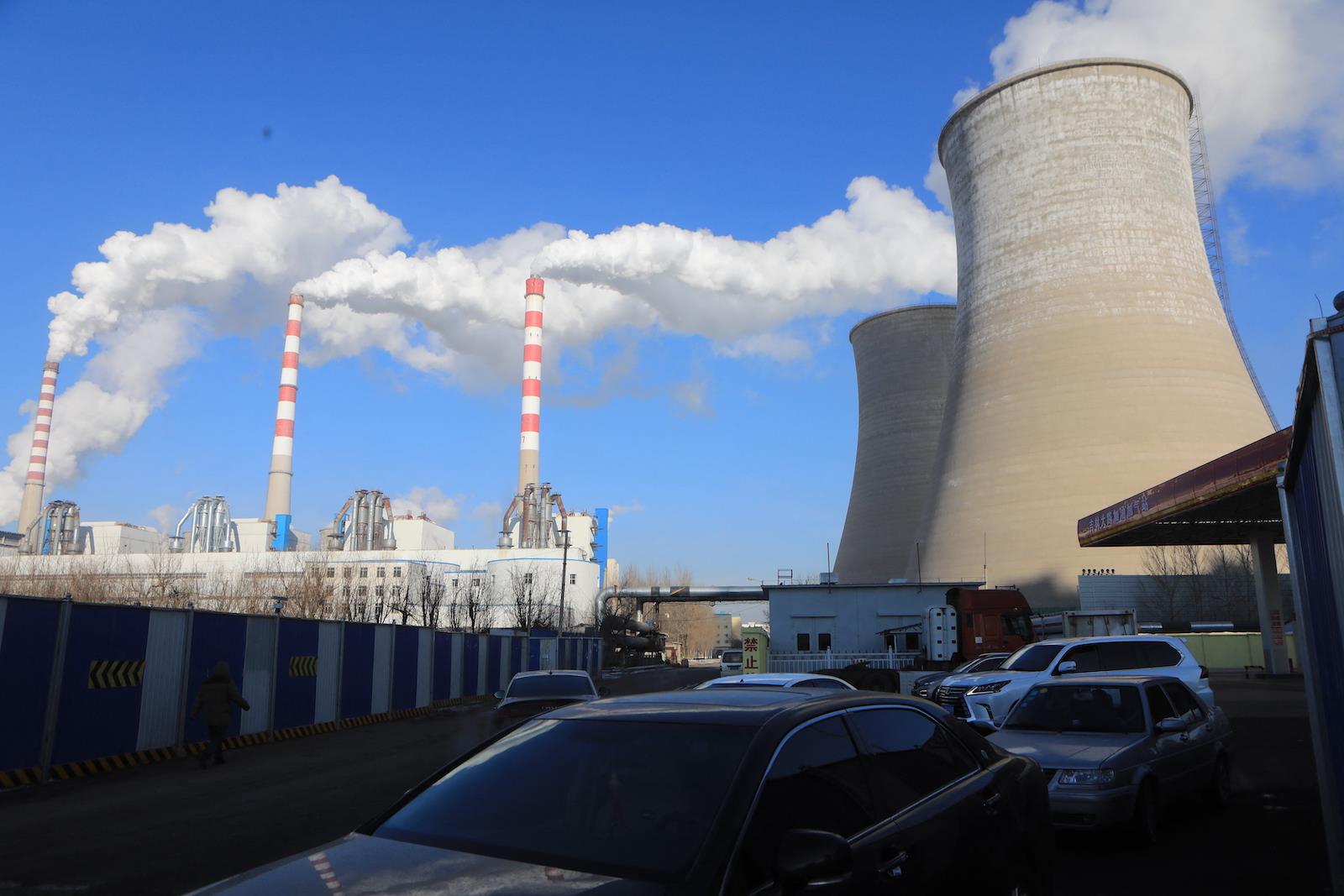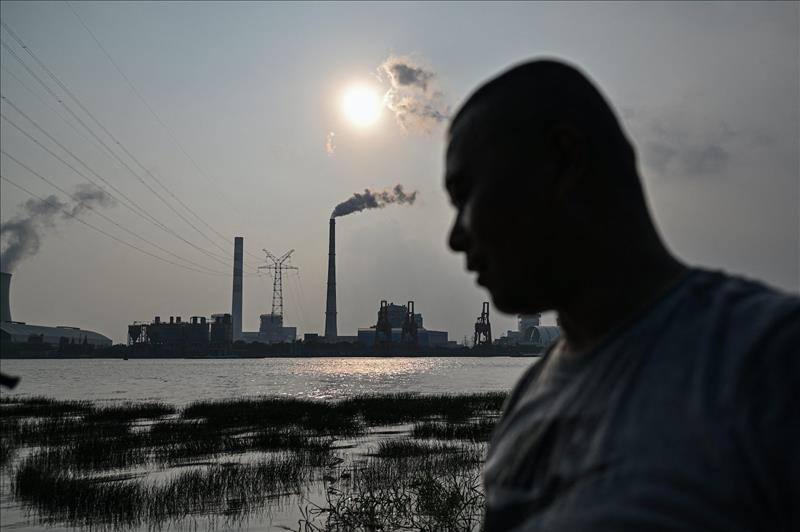
China plunges into self-inflicted darkness
(MENAFN- Asia Times) China's power crunch threatens to upend global supply chains and accentuate shortages of goods during the gift-giving Christmas and New Year holidays.
Factories in China's manufacturing hub of Guangdong are under heavy pressure to complete orders by October amid concerns limited power supplies will be diverted to households and essential services when the winter cold season takes hold.
A sudden spike in thermal coal prices and government-imposed caps on electricity prices have caused many power plants to shut down their generators since September, resulting in a power crunch that started in the northeast but is now spreading nationwide.
Experts and commentators have said China's punitive restrictions on Australian coal imports, part of the two sides' diplomatic spat cum trade war, as well as the implementation of new emission targets have fueled the power shortages that now threaten to critically cripple industrial output.
China, the world's biggest coal consumer, imported a total of 197.7 million tonnes of coal in the first eight months of 2021, down 10% year-on-year. But August coal imports rose by more than a third on tight domestic supplies, according to reports.
By mid-September, China's inventory of thermal coal had drastically declined, due in part to extraordinary electricity demand caused by a heatwave in southern China.
On Wednesday, in a sign of desperation, Chinese authorities called on railway companies to ramp up operations to deliver coal supplies to utility companies, news agencies reported.
The power crunch was largely foreseeable. China's benchmark Qinhuangdao coal price skyrocketed to nearly 1,000 yuan (US$155) per tonne by the end of June, up dramatically from 566 yuan per tonne at the end of February.
In the week ended September 23, the China Electricity Coal Index, a measure of power generation-side coal purchasing price levels, showed the benchmark price hit 1,086 yuan per tonne, up 56% from the end of last year or nearly double from a year ago.

A coal worker shovels the fuel in a file photo. Image: Agencies
Thermal coal futures hit an all-time high of 1,376.8 yuan per tonne on Wednesday – adding yet more pressure on power utilities unable to recoup added fuel costs, according to a Reuters report.
With state-imposed caps on electricity prices, power plants have opted to reduce supplies rather than incur losses caused by the higher coal prices. Authorities are now considering allowing industrial power prices to float higher to ease the crunch, news reports said.
The state planner National Development Reform Commission (NDRC) said it would allow electricity prices to float within a“reasonable” range to better reflect market coal prices. At the same time, authorities have sought to assure citizens that will be sufficient power for household use as winter approaches, according to reports.
Curbs have been imposed on power use across large swathes of the country, including the three northeastern provinces of Liaoning, Jilin and Heilongjiang that are home to nearly 100 million people.
Over the weekend, the three provincial governments announced power cut plans, which resulted in major disruptions to the daily lives of people and business operations on Monday. Many people were stuck in elevators, traffic lights were off and candles were sold out. Water supplies were also affected by the power crunch in some districts.
Lin Boqiang , dean of the China Institute for Studies in Energy Policy at Xiamen University, said the power crunch in the three northeastern provinces was mainly caused by a shortage of thermal coal while an unexpected fall in wind power supplies and rising power demand from metal suppliers had also worsened the situation.
Last year, 63% of the three provinces' power was generated by thermal coal while wind and solar power accounted for 17% and 8%, respectively, Lin said.
On Monday, Han Jun, governor of Jilin province, said during a visit to local power plants that the province would increase coal imports from Russia, Indonesia and Mongolia, and had already deployed a special team to monitor the coal supply in Inner Mongolia.
“The shortage of coal supply globally affects China even more, given its heavy reliance on coal-fired electricity and the import restrictions of coal from Australia stemming from their deteriorated relations,” said Alicia Garcia Herrero, chief economist for the Asia Pacific at Natixis.

Emissions are discharged from a coal-fired power plant in Changchun city in northeast China's Jilin province. Photo: AFP / Wang Zhendong / Imaginechina
“Also, China's industrial production, which has increased 13.1% this year, has pushed up thermal coal prices massively from less than 700 yuan per tonne to over 1,200 yuan per tonne. The cap of electricity prices by local governments limits the pass-through of higher input costs to electricity users,” Herrero said.
“This has considerably squeezed the margin for electricity generators and lowered the incentives to generate electricity, which in turn forced local governments to restrict demand for electricity through rationing,” she said.
Herrero also said the Chinese government had suggested boosting thermal coal production even though such moves would clash with its longer-term carbon-reducing emission targets.
At least part of the power crisis has been self-inflicted. In October last year, China implemented a ban on Australian coal imports after Canberra called for an international investigation into the origin of the Covid-19 pandemic.
In late 2020, China experienced a first nationwide power crunch due to a shortage of thermal coal caused by that ban. It then moved to import more coal from Southeast Asian countries, though some of them reportedly re-exported Australian coal at a markup.
Power shortages were reported in many Chinese provinces since the summer, mainland media noted.
“The declining inventory of thermal coal is a main reason of the power crunch,” said Gong Shengli, a Beijing-based researcher at Guoqing Neican, a magazine for government departments.“A lot of power plants in Guangdong province are now panic buying thermal coal. Such a trend will continue in the last quarter of this year,” he predicted.
On Sunday, the Energy Bureau of Guangdong Province and China Southern power grid jointly announced a plan to reduce power consumption in the province.

China last year announced plans to achieve net-zero emissions by 2060. In this file photo, a man passes the Shanghai Waigaoqiao Power Generator Company coal power plant in Shanghai. Photo: AFP.
Guangdong residents have been urged to conserve energy, including by turning off unnecessary electronic devices, limiting elevator use for the first three floors of buildings and keeping air conditioners set at over 26 degrees Celsius.
Certain enterprises are being forced to work only two to three days a week, while some manufacturers in Foshan and Shantou in the province have been ordered to limit production and work to only one day per week.
Media reports have said many factories are now opened only between 11 pm and 7 am as they rush to meet Christmas orders and avoid power consumption in peak daylight hours.

Legal Disclaimer:
MENAFN provides the information “as is” without warranty of any kind. We do not accept any responsibility or liability for the accuracy, content, images, videos, licenses, completeness, legality, or reliability of the information contained in this article. If you have any complaints or copyright issues related to this article, kindly contact the provider above.
Most popular stories
Market Research

- Manuka Honey Market Report 2024, Industry Growth, Size, Share, Top Compan...
- Modular Kitchen Market 2024, Industry Growth, Share, Size, Key Players An...
- Acrylamide Production Cost Analysis Report: A Comprehensive Assessment Of...
- Fish Sauce Market 2024, Industry Trends, Growth, Demand And Analysis Repo...
- Australia Foreign Exchange Market Size, Growth, Industry Demand And Forec...
- Cold Pressed Oil Market Trends 2024, Leading Companies Share, Size And Fo...
- Pasta Sauce Market 2024, Industry Growth, Share, Size, Key Players Analys...





















Comments
No comment